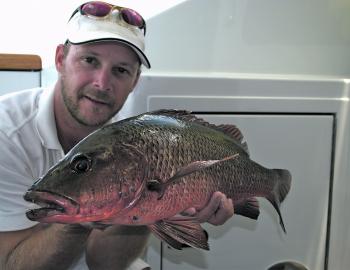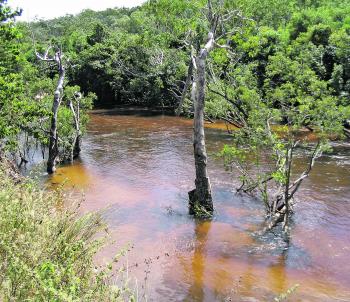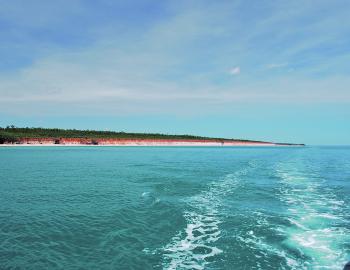While the Northern Territory and Kimberley regions are crowing about the fantastic wet season run-off they experienced, Cape York missed the torrential rains and extreme weather events. Substantial rainfall totals were recorded in the Northern Peninsula down to around Aurukun on the west coast and isolated patches around Kowanyama and Cooktown.
Anglers up and down the Cape York Coast made great use of the monsoon period, using pockets of calm weather to get amongst both pelagic and estuarine species in good numbers. May will be the trigger for seasonal high-pressure systems, with this weather pattern emerging towards the end of April. Expect moist air and scattered showers to keep things green and waterways flowing.
May is a truly awesome time to be fishing the Cape. Most species are on offer this time of year and Cape York’s generally warmer weather can see the barramundi fishing fire right through the month. With more settled conditions, the fish will have spread out and will be actively hunting and fattening up.
Rock bars, submerged structure and even open current convergences can mean great barra fishing. Finding a run of good fish will often see the same spots fire on similar tides and moons throughout the month. Lookout for heavy feeding periods on the build up and over the full moon. Barra will feed in darkness even more at times than during the day.
Anglers equipped with side-scanning sounders and pinpoint GPS technologies are having amazing success targeting wild barra at night on soft plastics. Larger fish tend to be consistent in their holding positions over certain tides and moon phases. This means tactics can be replicated in targeting female barra. They’ll swipe a large paddle-tail wound slowly past their nose.
Two fish which coexist in almost every Cape York estuary are golden snapper and mangrove jack. Usually one species will be more prevalent than the other, dominating the prime snag and rock bar structures. Jacks can be targeted on super shallow divers and poppers, while golden snapper will usually feed a little lower in the water column. Both species will feed on small crustaceans, molluscs and tiny baitfish, varying their diet to capitalise on plentiful food sources.
Changes in tide are a huge catalyst for golden snapper coming on the bite. They will throw caution to the wind over small windows of the tide, taking baits and lures with equal gusto. Fish around the kilo mark are the easiest to fool and perhaps the best to eat. Smaller deep divers, a range of plastics, vibes and strip baits are great ways to target golden snapper.
Mangrove jack are quite often easiest to catch on a receding tide, using small indentations in the creek and river bank to ambush bait. In this scenario, shallow divers, poppers and lightly rigged plastics cast slightly upstream of structure will see the best presentations struck almost immediately. The incoming tide will see jacks move towards the front of an estuary and feed ferociously during the first hour of run.
May is a dynamic time to be in Cape York with access to most of its vast expanse generally opened up. Animal, bird and fish life are a huge factor drawing visitors north with crowd numbers set to swell between May and September on the famous Cape York track.
• For information on remote charter operations for tailored fishing adventures, please email Tim on --e-mail address hidden--
Reads: 2042

A great jack taken on a rock bar. 
The lovely Pascoe River after late rain. 
West coast of the Cape just south of Weipa. Matched Content ... powered by GoogleLatest Articles

Most Popular |
|---|



